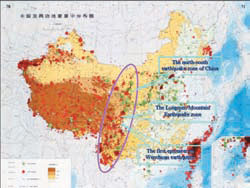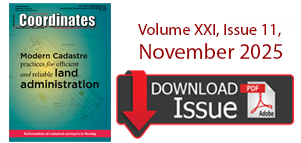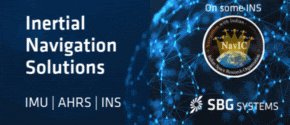China is set to prove its determination for rapid development.
Olympic is not the sole reason but is otherwise also.
It seems to be backed by a vision and action plans.
One one hand we can see the massive infrastructure …

Synchronet – an innovative system
Franco Gottifredi, Monica Gotta, Enrico Varriale, Daniele Cretoni
High Resolution Satellite Imagery (HRSI) replace Aerial Photography?
Shunji Murai
Role of Photogrammetry and Remote Sensing in Wenchuan Earthquake
Deren Li
3D mapping from space?
Prof Dr Armin Gruen, Dr Kirsten Wolff
My experience with GPS licensing
Manvendra

Boeing considering submitting bid for EU’s Galileo project
Boeing Co is considering submitting a bid in the forthcoming tender for EU’s Galileo satellite navigation project, Handelsblatt said, citing a Boeing spokeswoman. Handelsblatt said Boeing is interested in participating in the tender for 26 position satellites, which make up one-third of the overall budget for the estimated 3.4 billion euros Galileo project. The Galileo project would be divided into six segments — satellites, launchers, computer programmes, ground stations, control stations and system operation. EU officials have previously said the European Commission and the European Space Agency would launch public tenders by the middle of this year, with a view to first contracts being signed before 2009.http://www.hemscott.com/news/
PhotograPhy happens to be my current favourite hobby. Recently I developed interest in geocoding my photographs. By geocoding photographs you can associate a geographical location with the photograph. This involves putting the latitude, longitude and altitude in the photographs EXIF tags. Exchangeable image file format (Exif) is a specification for the image file format used by digital cameras. This is trivial if you use a GPS receiver. Last year, I had succeeded in making necessary interface to my Nikon D200 camera with a GPS receiver.

GPS system used to slow speeding cars
Cars will be fitted with test systems which tell drivers of speed limits and reduce vehicle speeds if they fail to slow down, as part of a new road safety trial in NSW, Australia. It will be a $1 million, 18-month trial involving 100 cars. The cars will be fitted with GPS devices. It will also warn drivers if they are speeding. In addition, 40 of the cars will be fitted with separate technology limiting fuel to the engine if a driver fails to slow down, automatically forcing a reduction in the car’s speed. http://news.theage.com.au

Credent aids in Myanmar’s cyclone relief work
img23
After NARGIS cyclone hit Myanmar and took the lives of about 100,000, an estimated 1.5 million victims are trying to survive in midst of chaos. Credent plans to extend assistance in the cyclone affected regions by providing the related map data from available resources including local organizations and the web. The development of the maps and GIS data is currently under Credent expense. To strengthen the provision of this vital information, any funding received will greatly improve the speed of the work. www.credent-asia.com/

An earthquake, measured 8.0 on the Richter scale, struck Wenchuan County, Sichuan Province at 14:28 on May 12, 2008. The epicenter was at Yingxiu, a town in Wenchuan, as shown in Figure 1. As indicated in Figure 1, the middle segment of the Longmen Mountain earthquake zone encloses the epicenter, Yingxiu, with the Longmen Mountain zone being part of the north-south earthquake zone in China. According to records, there have been 9 earthquakes larger than a grade of 8 occurring in the north-south earthquake zone from 1739, and 7 of them were after 1897, when the greatest one was at Haiyun in 1920 and at Chayu in 1950, both of them measured 8.5.

Carlson Software to give users CAD platform choice
Bruce Carlson, president and founder of Carlson Software Inc., announced the addition of the ability to run on IntelliCAD (ICAD) to the 2009 releases of Carlson Software. These include Carlson Civil 2009, Carlson Survey 2009, Carlson Hydrology 2009, Carlson Mining 2009, Carlson Takeoff 2009 and Carlson GIS 2009. www.carlsonsw.com












 (5.00 out of 5)
(5.00 out of 5)